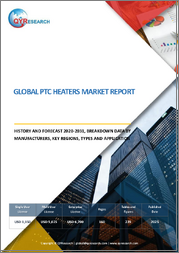
|
시장보고서
상품코드
1775433
세계의 자동차용 냉매 시장 : 예측(2025-2030년)Global Automotive Refrigerants Market - Forecasts from 2025 to 2030 |
||||||
자동차용 냉매 시장은 CAGR 7.28%로, 2025년 53억 4,000만 달러에서 2030년에는 75억 9,000만 달러로 성장할 것으로 예측됩니다.
자동차 냉매 시장 조사 보고서는 진화하는 자동차 냉매 산업에 대한 종합적인 분석과 시장 역학, 기술 발전, 경쟁 전략에 대한 실용적인 인사이트을 원하는 업계 전문가를 위해 작성되었습니다. 냉매 유형, 차종, 판매 채널, 지역 등에 초점을 맞추어 시장을 형성하는 주요 동향, 촉진요인 및 과제를 조사했습니다. 경쟁 구도를 자세히 조사하고 주요 기업의 최근 동향을 강조함으로써 이해관계자들에게 전략적 의사결정을 위한 중요한 정보를 제공합니다.
시장 개요 및 범위
자동차 냉매 시장 조사에서는 자동차 냉매를 R-134a, R-1234a, R-1234yf, 신흥 대체품 등의 유형에 초점을 맞추고 열을 흡수하고 방출하기 위해 자동차 공조 시스템에 사용되는 물질로 정의합니다. 조사 범위는 승용차와 상용차를 포함하며, 북미, 유럽, 아시아태평양, 남미, 중동 및 아프리카를 포함한 각 지역의 온라인 및 오프라인 채널을 통한 판매를 분석합니다. 이번 조사에서는 에너지 효율이 높은 냉각 시스템에 대한 수요 증가와 엄격한 환경 규제와 같은 시장 성장 촉진요인뿐만 아니라, 높은 GWP(지구온난화지수) 냉매의 단계적 퇴출과 같은 시장 성장 억제요인도 다루고 있습니다. 이 보고서는 Portre's Five Forces과 산업 밸류체인 분석을 활용하여 시장 기회와 과제에 대한 전체적인 그림을 제공합니다.
기술 및 규제에 대한 인사이트
자동차 냉매 시장은 하이드로플루오로카본(HFC)의 단계적 감축을 의무화한 몬트리올 의정서의 키갈리 수정 조항과 같은 세계 합의에 따라 저 GWP 냉매로의 기술 전환이 진행되고 있음을 강조하고 있습니다. 이 연구는 R-134a와 같은 기존 HFC에 비해 환경 부하를 줄이는 R-1234yf와 같은 하이드로플루오로올레핀(HFO)의 채택과 같은 냉매 기술 혁신에 대해 조사했습니다. 특히 북미와 유럽의 규제 프레임워크에 대해 시장 도입과 기술 혁신에 미치는 영향을 분석하고, 컴플라이언스를 잘 극복하고 새로운 동향을 활용하기 위한 전략적 제안을 하고 있습니다.
경쟁 환경 및 분석
자동차 냉매 시장의 경쟁 환경은 멕시코켐(올비아), 린데, 아르케마, 아르케마, 다이킨 그룹, 다이킨산업, National Refrigerants, 마리엘, 케무르, 하니웰 인터내셔널, 시노켐 랜턴 등 주요 기업 간의 치열한 적대적 관계가 특징입니다. 이 보고서의 경쟁 분석 섹션에서는 시장 점유율의 역학, 전략적 구상, 최근 동향에 대해 자세히 다루고 있으며, 업계가 지속가능성과 혁신에 초점을 맞추고 있다는 점을 강조하고 있습니다. 다음은 경쟁 구도를 형성하고 있는 주요 기업의 주목할 만한 두 가지 발전입니다.
1. Honeywell International의 Solstice N41(R-466A) 현장 시험: 2021년 6월, Honeywell은 Trans Technologies와 협력하여 R-410A를 대체하는 불연성 및 저 GWP Solstice N41(R-466A)의 현장 시험을 실시했습니다. 이 냉매는 동등한 효율을 유지하면서 GWP를 65% 감소시켰으며, 자동차 시스템을 포함한 상업용 및 주거용 공조 용도를 대상으로 합니다. 미국 여러 지역에서 진행된 이번 테스트는 지속가능한 냉매에 대한 환경 규제와 시장 수요에 대응하기 위한 하니웰의 노력을 보여줍니다. 이번 개발로 하니웰은 HFO 기반 솔루션의 선두주자로서의 입지를 강화하고, 세계 탈탄소화 목표에 부합하며, 전체 시장의 경쟁 전략에 영향을 미칠 수 있게 되었습니다.
2. 다이킨산업의 인도 R&D 투자 2025년 4월, 다이킨은 인도 라자스탄 주 님라나에 약 6,000만 달러를 투자하여 기존 제조 시설에 인접한 R&D 센터를 신설했습니다. 이 센터는 수출 시장을 위한 에너지 효율 기준과 냉매 규제에 부합하는 HVACR 제품 개발에 주력하고 있습니다. 이러한 노력은 다이킨의 기술 혁신 파이프라인을 강화하는 것으로, 특히 R-32 및 R-290과 같은 저 GWP 냉매는 자동차 및 주거용 용도에서 인기를 얻고 있습니다. 다이킨은 인도와 같은 고성장 시장에서 R&D 역량을 확대함으로써 자동차 냉매 시장의 중요한 성장 분야인 아시아태평양에서의 경쟁력을 강화할 것입니다.
이러한 발전은 저 GWP 냉매에 대한 주요 기업의 전략적 집중과 지역적 확장을 강조하고 있습니다. 자동차 냉매 시장 조사는 또한 2025년 3월 Honeywell이 에너지 및 지속가능성 솔루션을 강화하기 위해 Sundyne LLC를 21억 6,000만 달러에 인수하는 등 냉매 포트폴리오를 간접적으로 지원하는 합병, 인수 및 제휴에 대해 자세히 설명합니다. 경쟁 대시보드는 시장 포지셔닝을 시각적으로 표현하여 업계 전문가들이 전략적 동향과 시장 점유율 변화를 효과적으로 평가할 수 있도록 돕습니다.
지역 및 부문별 분석
이 보고서는 냉매 유형, 차종, 판매 채널, 지역별로 시장을 세분화하여 지역별 역학에 대한 상세 인사이트를 제공합니다. 중국과 인도가 주도하는 아시아태평양은 급속한 도시화, 자동차 생산량 증가, 인프라 투자로 인해 우위를 점하고 있습니다. 북미와 유럽은 엄격한 규제와 HFO의 채택으로 인해 북미와 유럽이 주도하고 있습니다. 승용차 및 상용차, 온라인 및 오프라인 판매 채널에 대한 분석을 통해 시장 선호도에 대한 미묘한 이해를 통해 이해관계자들이 고성장 부문을 공략할 수 있도록 돕습니다.
이 보고서의 주요 장점
- 인사이트 분석 : 고객 부문, 정부 정책 및 사회경제적 요인, 소비자 선호도, 산업별, 기타 하위 부문에 초점을 맞추고 주요 지역뿐만 아니라 신흥 지역까지 포괄하는 상세한 시장 인사이트를 얻을 수 있습니다.
- 경쟁 구도: 세계 주요 기업이 채택하고 있는 전략적 전략을 이해하고, 적절한 전략을 통한 시장 침투 가능성을 파악할 수 있습니다.
- 시장 동향과 촉진요인 : 역동적인 요인과 매우 중요한 시장 동향, 그리고 이들이 향후 시장 발전을 어떻게 형성할 것인지에 대해 알아봅니다.
- 실행 가능한 제안: 역동적인 환경에서 새로운 비즈니스 스트림과 매출을 발굴하기 위한 전략적 의사결정에 인사이트를 활용합니다.
- 다양한 사용자에 대응: 스타트업, 연구기관, 컨설턴트, 중소기업, 대기업에 유익하고 비용 효율적 요소.
어떤 용도로 사용되는가?
산업 및 시장 인사이트, 사업 기회 평가, 제품 수요 예측, 시장 진출 전략, 지역적 확장, 설비 투자 결정, 규제 영향, 신제품 개발, 경쟁사 정보
조사 범위
- 2022-2024년의 과거 데이터 & 2025-2030년의 예측 데이터
- 성장 기회, 과제, 공급망 전망, 규제 프레임워크 및 동향 분석
- 경쟁사 포지셔닝, 전략 및 시장 점유율 분석
- 매출 성장 및 예측 국가를 포함한 부문 및 지역별 분석
- 기업 프로파일링(특히 재무 및 주요 개발)
목차
제1장 개요
제2장 시장 스냅숏
- 시장 개요
- 시장의 정의
- 조사 범위
- 시장 세분화
제3장 비즈니스 상황
- 시장 성장 촉진요인
- 시장 성장 억제요인
- 시장 기회
- Porter's Five Forces 분석
- 업계 밸류체인 분석
- 정책과 규제
- 전략적 제안
제4장 기술 전망
제5장 세계의 자동차용 냉매 시장 : 냉매 유형별
- 서론
- R-134a
- R-1234yf
- 기타
제6장 세계의 자동차용 냉매 시장 : 차종별
- 서론
- 승용차
- 상용차
제7장 세계의 자동차용 냉매 시장 : 판매채널별
- 서론
- 온라인
- 오프라인
제8장 세계의 자동차용 냉매 시장 : 지역별
- 서론
- 북미
- 미국
- 캐나다
- 멕시코
- 남미
- 브라질
- 아르헨티나
- 기타
- 유럽
- 독일
- 프랑스
- 영국
- 스페인
- 기타
- 중동 및 아프리카
- 사우디아라비아
- 이스라엘
- 아랍에미리트
- 기타
- 아시아태평양
- 중국
- 일본
- 한국
- 인도
- 태국
- 대만
- 인도네시아
- 기타
제9장 경쟁 환경과 분석
- 주요 기업과 전략 분석
- 시장 점유율 분석
- 합병, 인수, 합의 및 협업
- 경쟁 대시보드
제10장 기업 개요
- Mexichem S.A.B. de C.V
- Linde
- Arkema
- Dongyue Group
- Daikin Industries, Ltd.
- National Refrigerants, Inc.
- Mariel S.r.l.
- Chemours
- Honeywell International Inc
- Sinochem Lantian Co. Ltd.
제11장 부록
- 통화
- 전제조건
- 기준연도와 예측연도 타임라인
- 이해관계자에 대한 주요 이점
- 조사 방법
- 약어
The Global Automotive Refrigerants Market is expected to grow from USD 5.340 billion in 2025 to USD 7.590 billion in 2030, at a CAGR of 7.28%.
The Global Automotive Refrigerants Market research study provides a comprehensive analysis of the evolving automotive refrigerants industry, tailored for industry experts seeking actionable insights into market dynamics, technological advancements, and competitive strategies. This study examines key trends, drivers, and challenges shaping the market, with a focus on refrigerant types, vehicle types, sales channels, and geographic regions. It offers a detailed exploration of the competitive landscape, highlighting recent developments from key players to equip stakeholders with critical intelligence for strategic decision-making.
Market Overview and Scope
The Global Automotive Refrigerants Market study defines automotive refrigerants as substances used in vehicle air conditioning systems to absorb and release heat, focusing on types such as R-134a, R-1234yf, and emerging alternatives. The scope encompasses passenger and commercial vehicles, analyzing sales through online and offline channels across regions including North America, Europe, Asia Pacific, South America, and the Middle East & Africa. The study addresses market drivers like increasing demand for energy-efficient cooling systems and stringent environmental regulations, alongside restraints such as regulatory phase-outs of high-GWP (Global Warming Potential) refrigerants. By leveraging Porter's Five Forces and industry value chain analyses, the report provides a holistic view of market opportunities and challenges.
Technological and Regulatory Insights
The Global Automotive Refrigerants Market emphasizes the technological shift toward low-GWP refrigerants, driven by global agreements like the Kigali Amendment to the Montreal Protocol, which mandates the phase-down of hydrofluorocarbons (HFCs). The study explores innovations in refrigerant technologies, such as the adoption of hydrofluoroolefins (HFOs) like R-1234yf, which offer reduced environmental impact compared to traditional HFCs like R-134a. Regulatory frameworks, particularly in North America and Europe, are analyzed for their impact on market adoption and innovation, with strategic recommendations for navigating compliance and capitalizing on emerging trends.
Competitive Environment and Analysis
In the Global Automotive Refrigerants Market, the competitive environment is marked by intense rivalry among major players, including Mexichem (Orbia), Linde, Arkema, Dongyue Group, Daikin Industries, National Refrigerants, Mariel, Chemours, Honeywell International, and Sinochem Lantian. The study's competitive analysis section delves into market share dynamics, strategic initiatives, and recent developments that underscore the industry's focus on sustainability and innovation. Below are two notable developments from key players shaping the competitive landscape:
1. Honeywell International Inc.'s Solstice N41 (R-466A) Field Trials: In June 2021, Honeywell partnered with Trane Technologies to conduct field trials for Solstice N41 (R-466A), a nonflammable, low-GWP alternative to R-410A. This refrigerant achieves a 65% reduction in GWP while maintaining comparable efficiency, targeting applications in commercial and residential air conditioning, including automotive systems. The trials, conducted across multiple U.S. locations, demonstrate Honeywell's commitment to addressing environmental regulations and market demand for sustainable refrigerants. This development strengthens Honeywell's position as a leader in HFO-based solutions, aligning with global decarbonization goals and influencing competitive strategies across the market.
2. Daikin Industries' R&D Investment in India: In April 2025, Daikin invested approximately USD 60 million in a new research and development center in Neemrana, Rajasthan, India, adjacent to its existing manufacturing facility. This center focuses on developing HVACR products tailored to energy efficiency standards and refrigerant regulations for export markets. The initiative enhances Daikin's innovation pipeline, particularly for low-GWP refrigerants like R-32 and R-290, which are gaining traction in automotive and residential applications. By expanding its R&D capabilities in a high-growth market like India, Daikin reinforces its competitive edge in the Asia Pacific region, a key growth area for the Global Automotive Refrigerants Market.
These developments highlight the strategic focus on low-GWP refrigerants and regional expansion among leading players. The Global Automotive Refrigerants Market study further details mergers, acquisitions, and collaborations, such as Honeywell's acquisition of Sundyne LLC for USD 2.16 billion in March 2025 to bolster its energy and sustainability solutions, which indirectly supports its refrigerant portfolio. The competitive dashboard provides a visual representation of market positioning, enabling industry experts to assess strategic moves and market share shifts effectively.
Regional and Segmental Analysis
The study segments the market by refrigerant type, vehicle type, sales channel, and geography, offering granular insights into regional dynamics. The Asia Pacific region, led by China and India, dominates due to rapid urbanization, automotive production growth, and infrastructure investments. North America and Europe follow, driven by stringent regulations and adoption of HFOs. The analysis of passenger versus commercial vehicles and online versus offline sales channels provides a nuanced understanding of market preferences, aiding stakeholders in targeting high-growth segments.
Key Benefits of this Report:
- Insightful Analysis: Gain detailed market insights covering major as well as emerging geographical regions, focusing on customer segments, government policies and socio-economic factors, consumer preferences, industry verticals, and other sub-segments.
- Competitive Landscape: Understand the strategic maneuvers employed by key players globally to understand possible market penetration with the correct strategy.
- Market Drivers & Future Trends: Explore the dynamic factors and pivotal market trends and how they will shape future market developments.
- Actionable Recommendations: Utilize the insights to exercise strategic decisions to uncover new business streams and revenues in a dynamic environment.
- Caters to a Wide Audience: Beneficial and cost-effective for startups, research institutions, consultants, SMEs, and large enterprises.
What do businesses use our reports for?
Industry and Market Insights, Opportunity Assessment, Product Demand Forecasting, Market Entry Strategy, Geographical Expansion, Capital Investment Decisions, Regulatory Framework & Implications, New Product Development, Competitive Intelligence
Report Coverage:
- Historical data from 2022 to 2024 & forecast data from 2025 to 2030
- Growth Opportunities, Challenges, Supply Chain Outlook, Regulatory Framework, and Trend Analysis
- Competitive Positioning, Strategies, and Market Share Analysis
- Revenue Growth and Forecast Assessment of segments and regions including countries
- Company Profiling (Strategies, Products, Financial Information, and Key Developments among others.
Automotive Refrigerants Market Segmentations:
By Refrigerant Type
- R-134a
- R-1234yf
- Others
By Vehicle Type
- Passenger Vehicle
- Commercial Vehicle
By Sales Channel
- Online
- Offline
By Geography
- North America
- USA
- Canada
- Mexico
- South America
- Brazil
- Argentina
- Others
- Europe
- Germany
- France
- United Kingdom
- Spain
- Others
- Middle East and Africa
- Saudi Arabia
- Israel
- UAE
- Others
- Asia Pacific
- China
- Japan
- South Korea
- India
- Thailand
- Taiwan
- Indonesia
- Others
TABLE OF CONTENTS
1. EXECUTIVE SUMMARY
2. MARKET SNAPSHOT
- 2.1. Market Overview
- 2.2. Market Definition
- 2.3. Scope of the Study
- 2.4. Market Segmentation
3. BUSINESS LANDSCAPE
- 3.1. Market Drivers
- 3.2. Market Restraints
- 3.3. Market Opportunities
- 3.4. Porter's Five Forces Analysis
- 3.5. Industry Value Chain Analysis
- 3.6. Policies and Regulations
- 3.7. Strategic Recommendations
4. TECHNOLOGICAL OUTLOOK
5. GLOBAL AUTOMOTIVE REFRIGERANTS MARKET BY REFRIGERANT TYPE
- 5.1. Introduction
- 5.2. R-134a
- 5.3. R-1234yf
- 5.4. Others
6. GLOBAL AUTOMOTIVE REFRIGERANTS MARKET BY VEHICLE TYPE
- 6.1. Introduction
- 6.2. Passenger Vehicle
- 6.3. Commercial Vehicle
7. GLOBAL AUTOMOTIVE REFRIGERANTS MARKET BY SALES CHANNEL
- 7.1. Introduction
- 7.2. Online
- 7.3. Offline
8. GLOBAL AUTOMOTIVE REFRIGERANTS MARKET BY GEOGRAPHY
- 8.1. Introduction
- 8.2. North America
- 8.2.1. USA
- 8.2.2. Canada
- 8.2.3. Mexico
- 8.3. South America
- 8.3.1. Brazil
- 8.3.2. Argentina
- 8.3.3. Others
- 8.4. Europe
- 8.4.1. Germany
- 8.4.2. France
- 8.4.3. United Kingdom
- 8.4.4. Spain
- 8.4.5. Others
- 8.5. Middle East & Africa
- 8.5.1. Saudi Arabia
- 8.5.2. Israel
- 8.5.3. UAE
- 8.5.4. Others
- 8.6. Asia Pacific
- 8.6.1. China
- 8.6.2. Japan
- 8.6.3. South Korea
- 8.6.4. India
- 8.6.5. Thailand
- 8.6.6. Taiwan
- 8.6.7. Indonesia
- 8.6.8. Others
9. COMPETITIVE ENVIRONMENT AND ANALYSIS
- 9.1. Major Players and Strategy Analysis
- 9.2. Market Share Analysis
- 9.3. Mergers, Acquisitions, Agreements, and Collaborations
- 9.4. Competitive Dashboard
10. COMPANY PROFILES
- 10.1. Mexichem S.A.B. de C.V
- 10.2. Linde
- 10.3. Arkema
- 10.4. Dongyue Group
- 10.5. Daikin Industries, Ltd.
- 10.6. National Refrigerants, Inc.
- 10.7. Mariel S.r.l.
- 10.8. Chemours
- 10.9. Honeywell International Inc
- 10.10. Sinochem Lantian Co. Ltd.
11. APPENDIX
- 11.1. Currency
- 11.2. Assumptions
- 11.3. Base and Forecast Years Timeline
- 11.4. Key benefits for the stakeholders
- 11.5. Research Methodology
- 11.6. Abbreviations



















